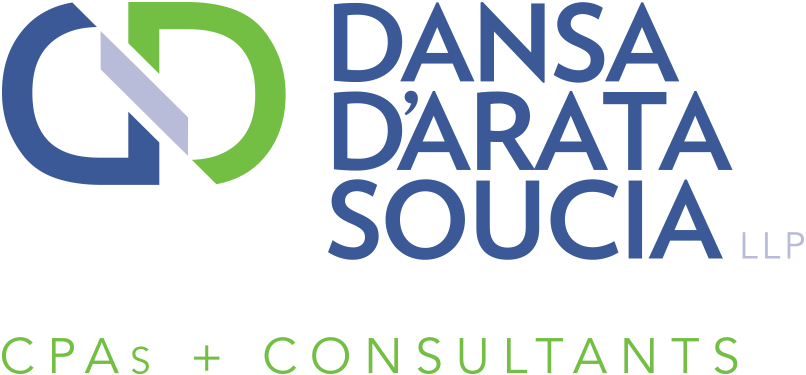Wayfair Ruling Redefines State Tax Filing Requirements for Businesses
[et_pb_section bb_built=”1″][et_pb_row _builder_version=”3.5.1″][et_pb_column type=”4_4″][et_pb_text _builder_version=”3.5.1″]
Wayfair Ruling Redefines State Tax Filing Requirements for Businesses
By: Griffin Jankowski, CPA
Supervising Senior Accountant
As e-commerce continues to grow and evolve so do the states methods for the assessment and collection of sales and use tax. We wanted to take the opportunity to alert you of a recent Supreme Court ruling which will likely have a significant impact on numerous businesses’ sales tax compliance requirements moving forward. On June 21st, 2018 in South Dakota v. Wayfair, Inc. the Supreme Court standardized taxing rules for traditional retailers and online transactions, ruling that states and localities may collect sales tax on all purchases over the internet. This decision overrules the previous case law set in Quill Corp. v. North Dakota which ruled in favor of a physical presence requirement test for purposes of the assessment and collection of sales and use tax.
Specifically, in 1992 the Supreme Court ruled in Quill Corp. v. North Dakota that it was unconstitutional for states to demand that out-of-state sellers collect and remit sales taxes on all purchases. The court said that states could not extend their taxing authority to companies that had no stores, warehouses or “physical presence” within the state. As online shopping has grown exponentially since 1992, the state of South Dakota and 41 other states urged the high court to revisit the question and consider overturning Quill Corp v. North Dakota. In 2016, while states continued to push for the reversal of the Quill decision, South Dakota became the first state to enact a pure economic nexus statute for sales and use tax collection purposes. More specifically, South Dakota required all entities with annual South Dakota sales of at least $100,000 or 200 separate transactions in the state to collect and remit South Dakota sales and use tax. As a result of noncompliance, South Dakota v. Wayfair, Inc. became a significant Supreme Court case to determine the legality of a state’s right to collect sales and use tax from online retailers selling to customers located in their state. The Supreme Court concluded that the long-standing physical presence rule put businesses with a physical presence in the state at a competitive disadvantage compared to remote sellers because entities with a physical presence were required to collect and remit sales and use tax while remote sellers were not held to the same requirement.
The South Dakota v. Wayfair, Inc. case fundamentally redefines a taxpayers potential filing requirements in all states. Not only are additional sales and use tax filing requirements expected to be enforced, states may also begin to require income tax returns from taxpayers with economic nexus. It can be expected for other states to act quickly to enact their own economic nexus standards and thresholds to capture sellers without a physical presence in the state. Specifically, the following states already have laws in place to allow them to begin enforcing economic nexus rules in the very near future; Alabama, Connecticut, Georgia, Hawaii, Illinois, Indiana, Iowa, Kentucky, Louisiana, Maine, Minnesota, Mississippi, North Dakota, Oklahoma, Pennsylvania, Rhode Island, South Dakota, Tennessee, Vermont, and Washington. Although many states do not currently have laws in place to enforce an economic nexus regime, it likely will not be long before they mirror the aforementioned economic nexus enforced states.
As we move forward with our internal analysis of this ruling along with monitoring various specific state developments, we feel it is important to be proactive in determining the states where economic nexus may exist. If you have concerns or questions regarding your current or future sales and use tax requirements in light of this recent development, we suggest contacting one of our tax professionals to further discuss potential filing requirements resulting from the South Dakota v. Wayfair, Inc. decision. We appreciate the opportunity to serve your business needs and look forward to working with you to ensure you meet your compliance requirements.
[/et_pb_text][/et_pb_column][/et_pb_row][/et_pb_section]


 Technology is tricky. Much of today’s software is engineered so well that it will perform adequately for years. But new and better features are being created all the time. And if you’re not getting as much out of your financial data as your competitors are, you could be at a disadvantage.
Technology is tricky. Much of today’s software is engineered so well that it will perform adequately for years. But new and better features are being created all the time. And if you’re not getting as much out of your financial data as your competitors are, you could be at a disadvantage. Because donations to charity of cash or property generally are tax deductible (if you itemize), it only seems logical that the donation of something even more valuable to you — your time — would also be deductible. Unfortunately, that’s not the case.
Because donations to charity of cash or property generally are tax deductible (if you itemize), it only seems logical that the donation of something even more valuable to you — your time — would also be deductible. Unfortunately, that’s not the case. On one level, every company’s inventory is a carefully curated collection of inanimate objects ready for sale. But, on another, it can be a confounding, slippery and unpredictable creature that can shrink too small or grow too big — despite your best efforts to keep it contained. If your inventory has been getting the better of you lately, don’t give up on showing it who’s boss.
On one level, every company’s inventory is a carefully curated collection of inanimate objects ready for sale. But, on another, it can be a confounding, slippery and unpredictable creature that can shrink too small or grow too big — despite your best efforts to keep it contained. If your inventory has been getting the better of you lately, don’t give up on showing it who’s boss. “Going green” at home — whether it’s your principal residence or a second home — can reduce your tax bill in addition to your energy bill, all while helping the environment, too. The catch is that, to reap all three benefits, you need to buy and install certain types of renewable energy equipment in the home.
“Going green” at home — whether it’s your principal residence or a second home — can reduce your tax bill in addition to your energy bill, all while helping the environment, too. The catch is that, to reap all three benefits, you need to buy and install certain types of renewable energy equipment in the home. By and large, today’s employees expect employers to offer a tax-advantaged retirement plan. A 401(k) is an obvious choice to consider, but you may not be aware that there are a variety of types to choose from. Let’s check out some of the most popular options:
By and large, today’s employees expect employers to offer a tax-advantaged retirement plan. A 401(k) is an obvious choice to consider, but you may not be aware that there are a variety of types to choose from. Let’s check out some of the most popular options:
 Every year is a journey for a business. You begin with a set of objectives for the months ahead, probably encounter a few bumps along the way and, hopefully, reach your destination with some success and a few lessons learned.
Every year is a journey for a business. You begin with a set of objectives for the months ahead, probably encounter a few bumps along the way and, hopefully, reach your destination with some success and a few lessons learned.